The AMD Ryzen 7 5700G, Ryzen 5 5600G, and Ryzen 3 5300G Review
by Dr. Ian Cutress on August 4, 2021 1:45 PM ESTCPU Tests: Legacy and Web
In order to gather data to compare with older benchmarks, we are still keeping a number of tests under our ‘legacy’ section. This includes all the former major versions of CineBench (R15, R11.5, R10) as well as x264 HD 3.0 and the first very naïve version of 3DPM v2.1. We won’t be transferring the data over from the old testing into Bench, otherwise it would be populated with 200 CPUs with only one data point, so it will fill up as we test more CPUs like the others.
The other section here is our web tests.
Web Tests: Kraken, Octane, and Speedometer
Benchmarking using web tools is always a bit difficult. Browsers change almost daily, and the way the web is used changes even quicker. While there is some scope for advanced computational based benchmarks, most users care about responsiveness, which requires a strong back-end to work quickly to provide on the front-end. The benchmarks we chose for our web tests are essentially industry standards – at least once upon a time.
It should be noted that for each test, the browser is closed and re-opened a new with a fresh cache. We use a fixed Chromium version for our tests with the update capabilities removed to ensure consistency.
Mozilla Kraken 1.1
Kraken is a 2010 benchmark from Mozilla and does a series of JavaScript tests. These tests are a little more involved than previous tests, looking at artificial intelligence, audio manipulation, image manipulation, json parsing, and cryptographic functions. The benchmark starts with an initial download of data for the audio and imaging, and then runs through 10 times giving a timed result.
We loop through the 10-run test four times (so that’s a total of 40 runs), and average the four end-results. The result is given as time to complete the test, and we’re reaching a slow asymptotic limit with regards the highest IPC processors.

Sizeable single thread improvements.
Google Octane 2.0
Our second test is also JavaScript based, but uses a lot more variation of newer JS techniques, such as object-oriented programming, kernel simulation, object creation/destruction, garbage collection, array manipulations, compiler latency and code execution.
Octane was developed after the discontinuation of other tests, with the goal of being more web-like than previous tests. It has been a popular benchmark, making it an obvious target for optimizations in the JavaScript engines. Ultimately it was retired in early 2017 due to this, although it is still widely used as a tool to determine general CPU performance in a number of web tasks.
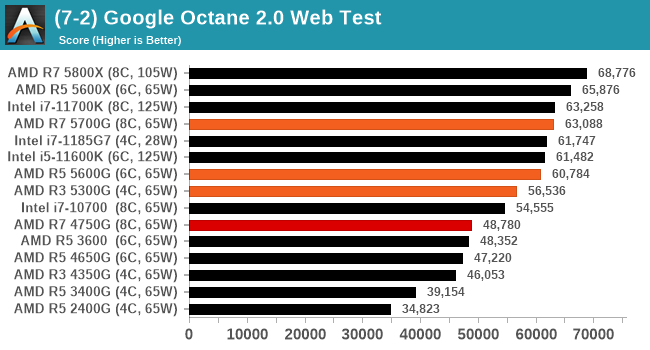
Speedometer 2: JavaScript Frameworks
Our newest web test is Speedometer 2, which is a test over a series of JavaScript frameworks to do three simple things: built a list, enable each item in the list, and remove the list. All the frameworks implement the same visual cues, but obviously apply them from different coding angles.
Our test goes through the list of frameworks, and produces a final score indicative of ‘rpm’, one of the benchmarks internal metrics.
We repeat over the benchmark for a dozen loops, taking the average of the last five.
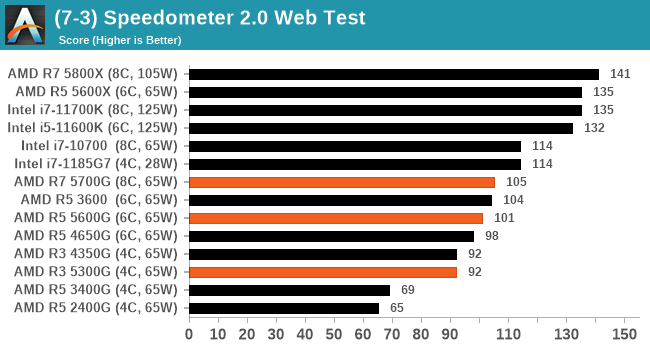
Legacy Tests
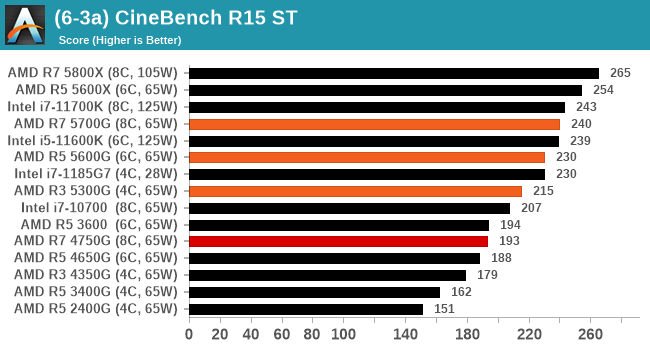
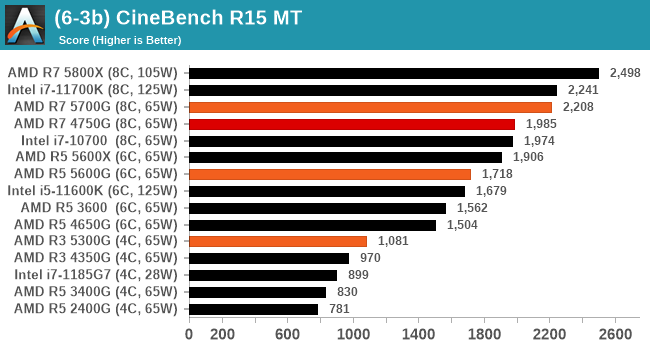
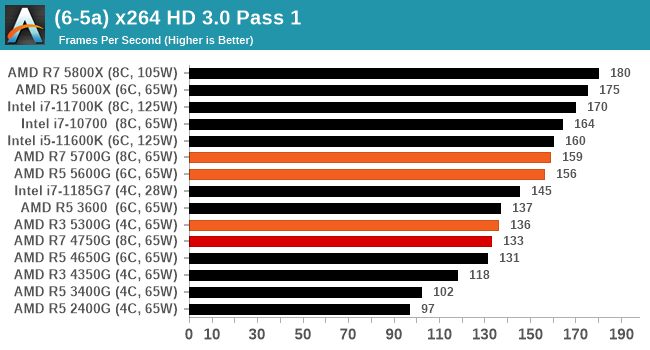
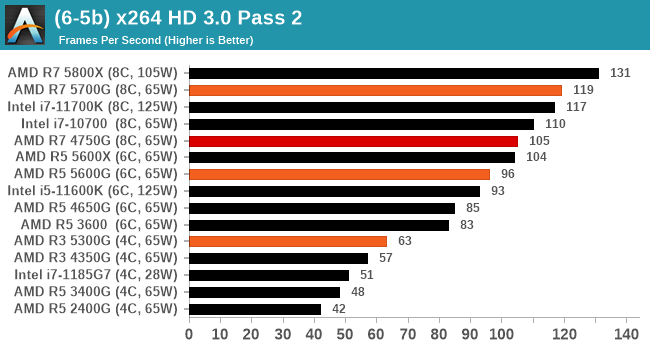

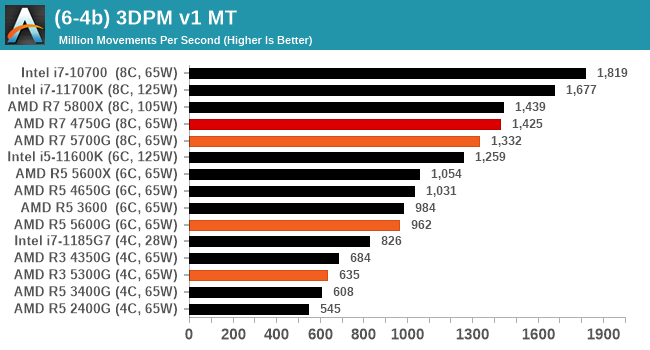


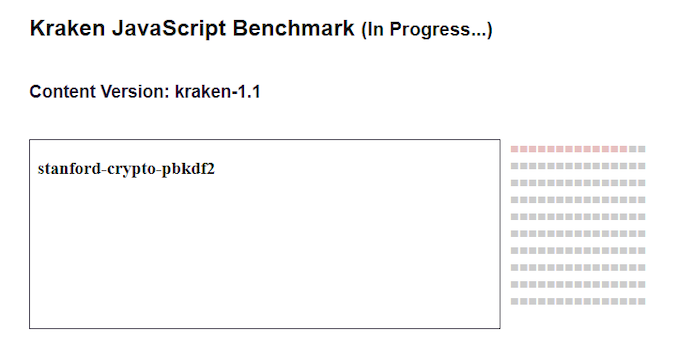
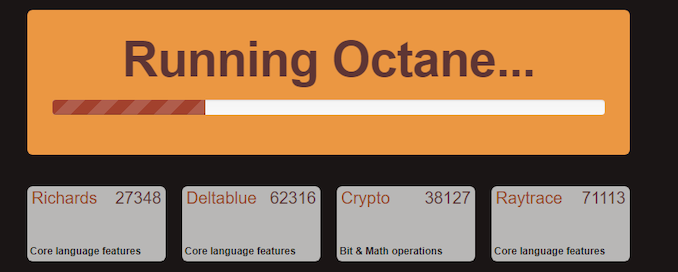
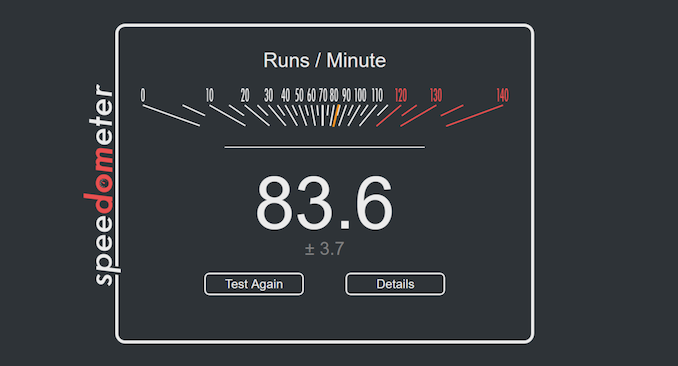








135 Comments
View All Comments
Dribble - Friday, August 6, 2021 - link
Might be because it isn't as power limited and hence won't throttle in the same way the AMD chip.Danvelopment - Thursday, August 5, 2021 - link
Is the 5600G 6 core or 8 core? The first page of the article says it's both on the two tables.eastcoast_pete - Thursday, August 5, 2021 - link
Now, imagine if those 5700 APUs would have kept the core numbers of the 3400, but clocked at current speeds. I hope that Intel will bring its 10 nm Desktop CPUs with the full Xe compliment of mobile Tiger Lake, as that might force AMD to up its game; well, the next APU generation will be RDNA2, so as long as AMD doesn't gimp it by keeping the GPU tiny, it should have significant uplift over CézanneCooe - Friday, August 6, 2021 - link
Far Cry 5 running at ≈25fps on average at "1080p Ultra" is actually CRAZY freaking impressive. Why? Because that means it should hit a solid >=30fps running at "1080p High", which basically means that this single chip APU solution is outperforming BOTH of the last generation console base models (aka PS4 & Xbox One/S) in this title!!! That's freaking NUTS!!!nandnandnand - Tuesday, August 10, 2021 - link
I wouldn't be surprised to see 1080p60 in the same scenarios with Rembrandt next year. But DDR5 will be expensive.nanonan - Friday, August 6, 2021 - link
Every other source I've read states the pcie configuration as 24 lanes divided into 16, 4 and 4 just like the 4000G series. Do you have a source for this 8+4+8 configuration?linuxgeex - Friday, August 6, 2021 - link
Anand wasn't perfect with proofing either but he was thorough on deep dives, exposing bottlenecks and explaining how and why it was relevant. These days Ian and co assume that if we're Anandtech readers we just trust their methodology and do some lip service by adding cut&paste boilerplate around specs and throw in an image sometimes from a past review, sometimes not directly relevant, and I get that they only have so much time to invest. It bores me, and it doesn't give the new people the same level of engagement that will built their future audience. Oh welles.Samus - Friday, August 6, 2021 - link
I blacked out after getting to the part where an entry-level AMD APU starts at $259.While I get yes there are the Athlon's, they are mostly outclassed by a 9th gen $90 Intel Core i3 so it isn't even worth consideration.
GeoffreyA - Saturday, August 7, 2021 - link
Yes, pricing is disappointing.mode_13h - Sunday, August 8, 2021 - link
They're starting strong, because it's a lot easier to lower prices than raise them, and that pricing reflects the supply/demand situation, especially when the 3000-gen are still widely available.Over time, I'm sure you can expect to see the gap close, particularly since the process node is the same and die sizes are similar.